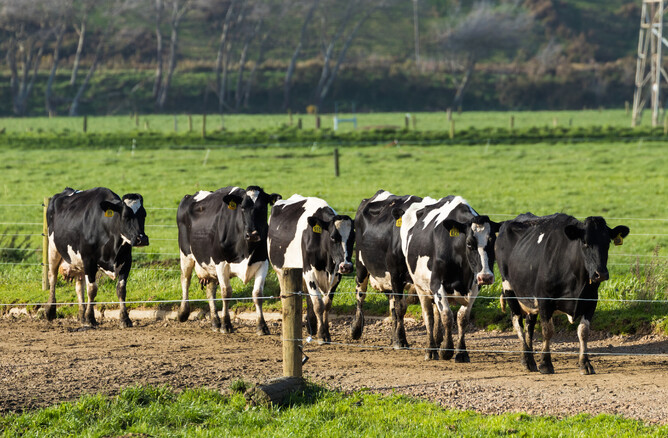With this unrelenting wet weather, cows’ feet will be soft and susceptible to damage and infection.
As we all know, lame cows are time-draining, costly and a welfare issue. So what measures can be put in place to try and prevent a high number of lameness cases?
Prevention
Ideally, cows wouldn’t be standing around in saturated paddocks for too long – but sometimes this can’t be avoided! Unfortunately, mud and moisture create the perfect environment for bacteria to affect hooves and skin.
While you can’t control the weather conditions, here are a few things you can do to lessen the impact of the rain and reduce lame cow numbers due to your farm systems:
Ensure that the shed, yards and feed pad surfaces are clean between each milking. Stones on concrete are particularly bad as they put cows at risk of sole injuries.
Allow the cows to walk at their own pace to the shed. Cows generally want to come in for milking. Putting too much pressure behind them, or using aids such as working dogs, will increase their chance of misplacing their feet.
Give them room in yards and use backing gates appropriately. The backing gate is designed for taking up space, not for pushing up cows. Cows bunched tightly together are more likely to slip or hurt their legs.
Maintain a consistent milking routine, no matter who is milking. Cows will be more relaxed which will reduce the chance of injury.
Keep lame cows in a separate mob close to the shed to reduce their walking distance and only bring them in for milking once a day.
Acknowledging this is a really tough time feed-wise, it’s also important to try to keep cows in as good condition as you can to lower lameness risk.
Beneath the hard sole of cows’ hooves there is a layer of fat called a ‘digital cushion’, which acts as a shock absorber. Lighter cows may be more predisposed to lameness as their digital cushions will contain less fat, therefore providing less padding.
Because cows with sore feet won’t be comfortable walking around to graze, their body condition will be further affected. This can create a cycle of lameness and will also negatively impact their production and reproductive performance.
Treatment
Early identification and prompt effective treatment of lame cows will give them the best chance of a quick recovery and will also reduce the chance of lameness reoccurring in the future, so remain vigilant for signs of lameness amongst your herd.
Observe: Is she bearing weight on all four legs? Is her stride length normal and even? Is her walking rhythm regular? A bobbing head or arched back could indicate lameness.
Any suspected lameness cases should be drafted, inspected and treated appropriately. The majority of cases won’t require antibiotics, however, most will benefit from anti-inflammatory pain relief and a block on the sound claw to take pressure off the painful side. This treatment can make a big difference to how severe cases become and the run-on effort and costs.
With the pasture-based dairy farming system used in New Zealand, where cows are required to walk long distances each day, the importance of hoof health cannot be overstated. Adding bad weather into the mix, prevention efforts and early detection are vital to lower case numbers.
We understand you’ll be under the pump with mating, so give us a ring if you would like a hand treating lame cows or ask your KeyVet for further prevention advice specific to your farming system.

